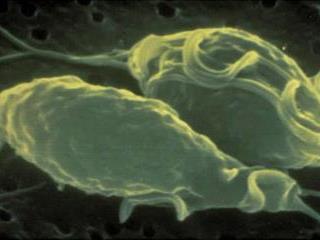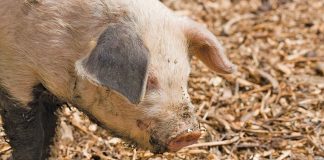
The venereal disease trichomoniasis – or ‘trich’ – is caused by the protozoan parasite Trichomonas vaginalis. It results in early foetal death, increasing the inter-calving period and undermining the profitability of a beef enterprise.
“Despite being an important disease, trichomoniasis is easy to control and eradicate,” says beef management consultant Barry Symons. But he stresses that the guidelines must be strictly adhered to:
Step 1. Take sheath wash specimens from the bulls for testing by a reliable laboratory. “If the results show that trichomoniasis is confined to a single female herd and its bulls, isolate these animals and treat them as necessary,” says Barry. “If trichomoniasis has infected all the animals in the herd, there is no option but to slaughter all the bulls.”
Step 2. Pregnancy-test all females. Separate those that are pregnant from those that are not. Do not put this second group to a bull in a “desperate attempt to get a return from a batch of autumn calves,” warns Barry. This could be a fatal mistake: a non-pregnant female infected with trich needs four to six months to get rid of the disease.
Step 3. “Vaccinate all trichomoniasis-free cattle to reduce the risk of their contracting it in the future,” says Barry.
Step 4. When a cow calves, separate her from cows that failed to produce live calves. Isolate cows with calves at foot into a lactating ‘wet herd’ that can be assumed to be trich-free. Quarantine cows and heifers that lost their calves and are therefore likely to be infected with trichomoniasis in a ‘dry herd’.
Step 5. “When it’s time to breed the wet cow herd again, use only virgin (trich-free) bulls,” says Barry. These should ideally be
yearlings, although two-year-old virgin bulls will also do.
Minimise losses
“You may have to put planned genetic progress for the beef herd on the back burner for a year or so until trichomoniasis is eradicated from the farm,” continues Barry. “To limit genetic regression in the herd, select virgin bulls from a reliable beef breeder.”
In working towards eradicating trich, concentrate on quickly getting as many ‘wet herd’ cows as possible in calf again to minimise the negative financial impact of the disease. All cows from the wet herd that reconceived but did not produce a live calf must be removed to prevent them re-infecting the herd.
“The dry cows kept away from the bulls should be trich-free after the four to six months of no contact with a bull,” says Barry. “Put them to virgin bulls.”
Calving
For the best calving management when eradicating trich, use a short breeding season of 42 to 63 days. As soon as the young bulls have done their work, cull them from the farm. “Keep all bulls with unknown trichomoniasis status off the farm,” says Barry. “If necessary, cull a farm worker’s bull and replace it with a trich-free bull. Put the farm worker’s cows through the same eradication programme as that of the enterprise’s cows.
“Make sure you don’t have a single bull calf, particularly not a late-season bull calf, on the farm after these processes have been completed,” says Barry. “One individual that’s carrying trichomoniasis can quickly undo all the effort put into eradicating it from the herd.”
Phone Barry Symons at 082 896 9076 or [email protected].













